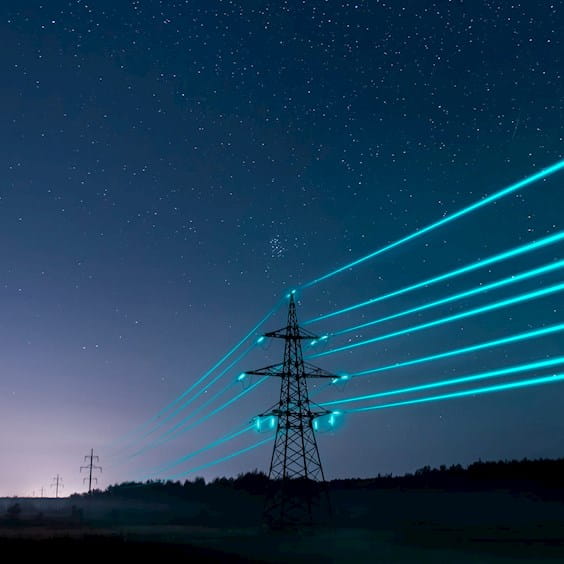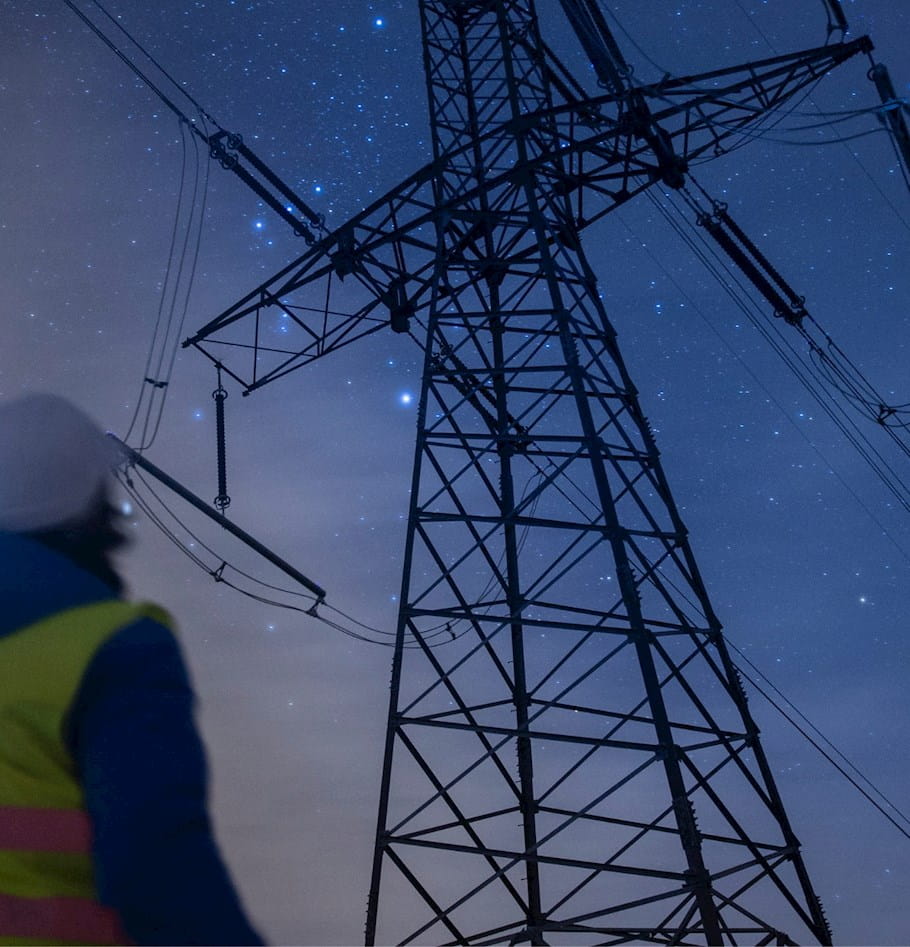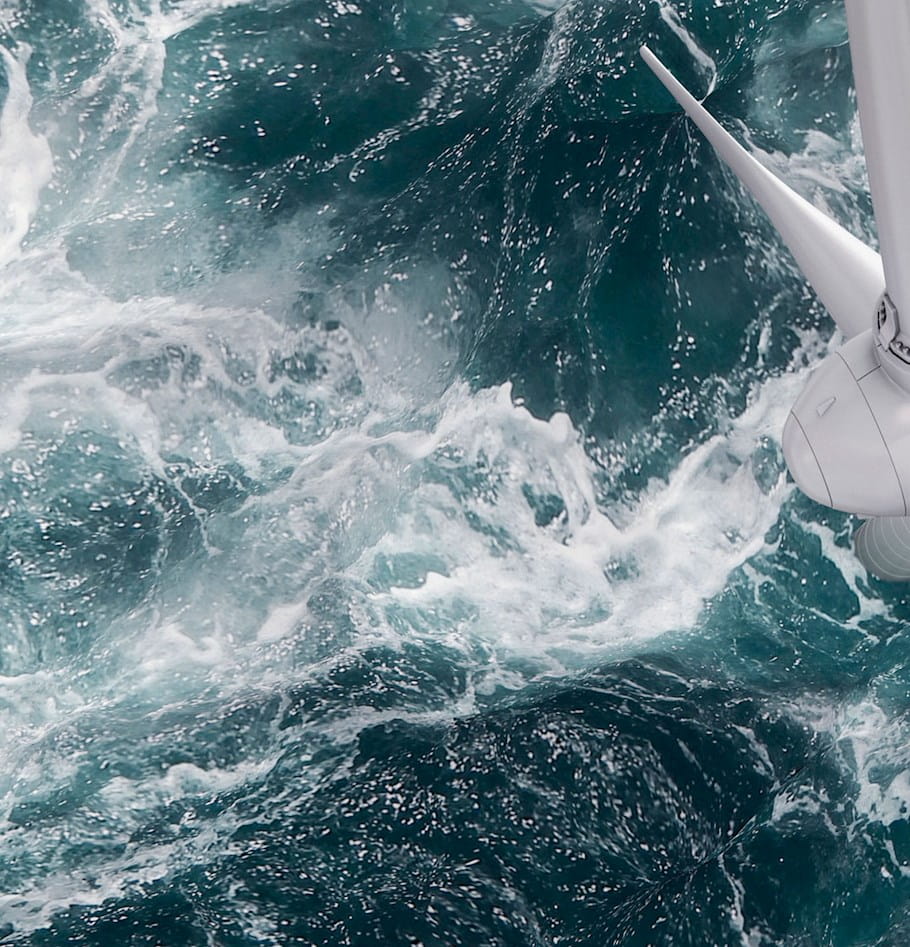Meeting electric transmission needs for the 21st century grid
Opportunities, policy impacts, and collaborative solutions to address U.S. transmission challenges and clean energy expansion
The U.S. power transmission grid is facing significant challenges. That includes interconnecting large-scale remote renewable energy resources, connecting states and regional electricity markets to facilitate interregional sales, and improving grid resiliency—Reducing transmission costs paid by customers would be an added benefit of strategically located new transmission infrastructure.
Additionally, as noted by the U.S. Congress and President Joe Biden, ambitious federal and state government decarbonization goals require upgrades in existing and the building of new transmission infrastructure if said goals are to be met. This has led to a surge of interest by developers and distribution utilities, and private equity flowing into the transmission sector.
But the needed growth in transmission cannot be met without leadership and partnerships among industry, government, and community stakeholders.
Transmission and decarbonization
A study by Princeton University found that accommodating the projected growth in renewable energy production would require a twofold to threefold increase in nationwide transmission system capacity by 2030. Curtailment rates and congestion costs continue to increase for many regions of the country, and the increasing penetrations of new large-scale wind and solar resources will further compound these challenges. Notably, more than 1,400 gigawatts (GW) of new resources—predominantly solar, wind, and battery storage—were queued up for grid interconnection by the end of 2021. Without new transmission interconnections, the influx of new generation resources waiting to connect might never materialize for lack of having markets to sell power into.
Given this context, upgrading and expanding the electric transmission network remains imperative. The policy initiatives to decarbonize the U.S. economy by electrifying buildings and transportation together with the need to reduce transmission congestion and interconnect electricity markets and regions of the country demand more transmission and distribution (T&D) infrastructure investment. The interplay between renewable growth, transmission expansion, and energy distribution underscores the intricate and multifaceted nature of the journey toward a clean and sustainable energy future.

Growing smart grid investments call for new asset performance management strategies
Read MoreThe U.S. Department of Energy's Grid Deployment Office (GDO) recently released the National Transmission Needs Study, which underscores the urgency of this issue. According to the study, 47,300 GW-miles of new transmission lines will be required by 2035—a 57% increase compared to the current system—to meet the growing demand for clean energy. Some estimates of new transmission needs to completely decarbonize the U.S. economy point to a quadrupling of existing T&D infrastructure. If all power generation needs are to be met with renewable energy resources and storage, an equal or greater amount of generation would also be required.
Improving grid efficiencies and reducing costs
Building new transmission infrastructure is essential to alleviate current constraints and facilitate the seamless flow of power between regions. By investing in high-voltage direct current and alternating current power lines, transmission substations, and distribution system enhancements, regional planning entities and wholesale market operators can improve grid operations and enhance grid stability. Strategically connecting regions and enabling greater power flow efficiencies will reduce energy costs and enable clean and renewable energy resources to serve distant load centers effectively.
The success of ambitious clean energy and decarbonization goals hinges on the development of a robust transmission network. A well-connected and interoperable electricity market will enable a quicker recovery from extreme weather events. In case of power outages in one region, others can step in to meet the energy needs—even if they are not neighboring regions. By fostering regional cooperation and improved grid resiliency, an expanded transmission network becomes a linchpin for realizing national clean energy objectives.
Siting and permitting energy projects
Developing new transmission infrastructure does not come without challenges. Market rules around transmission construction are continuously evolving, adding to uncertainty for investors. The long siting, permitting, and construction development cycle poses significant risks to project feasibility. Addressing these challenges requires a fresh perspective on transmission projects—one that views them as viable business opportunities rather than mere cost centers. A critical aspect involves having a skilled workforce capable of managing the entire transmission development process from conception to construction and operations.
The current environmental review process for large infrastructure projects in the U.S., governed by the National Environmental Policy Act of the 1970s, is known for its complexity and time-consuming nature. Projects—especially energy-related ones—undergo rigorous scrutiny by multiple federal, state, and local agencies, leading to long delays and high costs. For instance, the approval of the Trans West Express power line took a staggering 18 years from proposal until being approved by the Bureau of Land Management.

Navigating the Wait: Essential Next Steps for IIJA Federal Funding Hopefuls
Read MoreBut recent developments offer hope for permitting reform, aiming to streamline the approval process for new energy projects. The Fiscal Responsibility Act, a bipartisan agreement, calls for the designation of a lead agency when multiple agencies are involved in a proposed action. This lead agency is required to complete the environmental assessment within specific deadlines, thus expediting the permitting process. The emphasis on permitting reform is shared by both political parties and the White House, suggesting a growing consensus on the need for faster approvals to support energy infrastructure development.
To successfully site transmission projects and other critical infrastructure, a coordinated approach among various stakeholders is vital. This includes collaboration between federal, state, and local governments, private and public companies, and community members hosting the projects.
By working together, the focus should be on identifying sites that minimize negative conservation or ecosystem impacts while avoiding unacceptable tradeoffs. This proactive approach allows for the development of new energy assets in locations where potential harm to the environment is minimized.
Additionally, the concept of repurposing existing sites with some existing infrastructure can be a sustainable solution for new energy projects. By leveraging existing facilities and minimizing new development, the environmental impact can be reduced. Such an approach aligns with principles of environmental conservation and supports the goal of responsible infrastructure development.
Transmission developers could advance their projects faster and perhaps at lower cost to customers if they focused early on clearly and accurately defining and describing the project, including:
- The public need, the technology being proposed, and the source of factor-inputs, be they domestic or offshore.
- Providing sophisticated complex project oversight and management from project design through to siting and permitting, construction, and operation, and offering a community benefits program for impacted communities.
- Securing funding for transmission projects be it through equity and debt, private investment capital or funds, or DOE’s $65 billion in funding through three separate grant opportunities under the Grid Resilience and Innovation Partnership (GRIP) Program.
Each of these require an experienced team of in-house and consulting support: to flesh out detailed designs; review the selection and use of materials and equipment; consider supply chain sourcing including labor requirements; engineering, procurement, and construction support; and community, public relations, out-reach, and influencers to advance the project.
Conclusion
As the U.S. strives to decarbonize and achieve a more sustainable energy future, there is a pressing demand for additional electric transmission infrastructure. As policy discussions continue nationwide, the search intensifies for the ideal power-generation sources, locations, and technologies to ensure electric system reliability and meet future energy demands. Aggressive climate-mitigation goals set by many states emphasize the swift adoption of renewable energy generation in the coming decades. Amidst these conversations and policy initiatives, a critical challenge emerges—upgrading and expanding the T&D system in the United States.
Transmission projects must navigate the complexities of public acceptance regarding land use and its impact. Concerns include potential effects on scenic vistas, conservation areas, indigenous lands, species, habitats, and host communities. However, low-impact siting that steers project development toward previously developed and underused lands, or “smart siting,” minimizes regional environmental and conservation impacts, maximizes benefits to the region, and expands access to clean energy, including access to these benefits by underserved communities.
As we move forward, proactive engagement with host communities by utilities, project developers, and policymakers becomes a pivotal factor in ensuring the success of transmission projects. By fostering open communication, addressing concerns, and considering innovative solutions, the pathway to a cleaner and more resilient energy landscape becomes clearer.
References
Goel, Soam., Knobloch, Kevin. (September 2023). “Massive Scale Opportunities with Managed Risks Investing in Transmission.” Climate and Energy Journal. Vol. 40 No. 2, ©2023 Wiley Periodicals, LLC. a Wiley company.
DeCotis, Paul A. (August 2023). “Transmission Necessary to Scale Clean Energy.” Climate and Energy Journal. Vol. 40 No. 1, ©2023 Wiley Periodicals, LLC. a Wiley company.
DeCotis, Paul A., Cartwright, Echo D. (June 2021). “Smart Siting and Energy Infrastructure Development: A Challenge to Decarbonization.” Climate and Energy Journal. 37/11, ©2021 Wiley Periodicals, LLC. a Wiley company.

